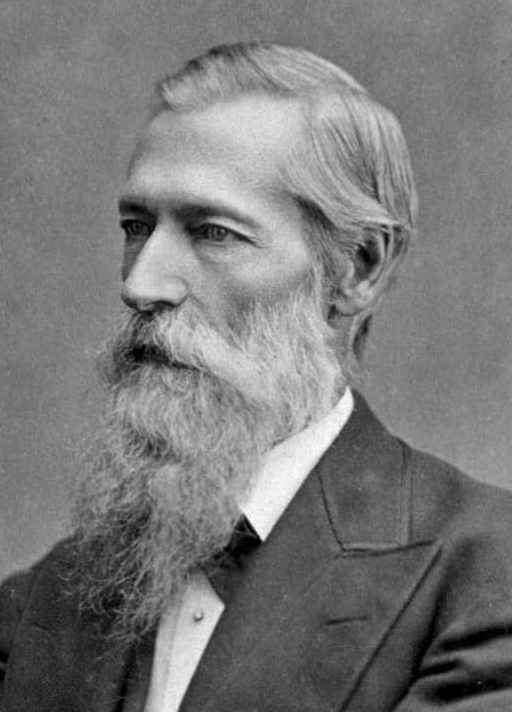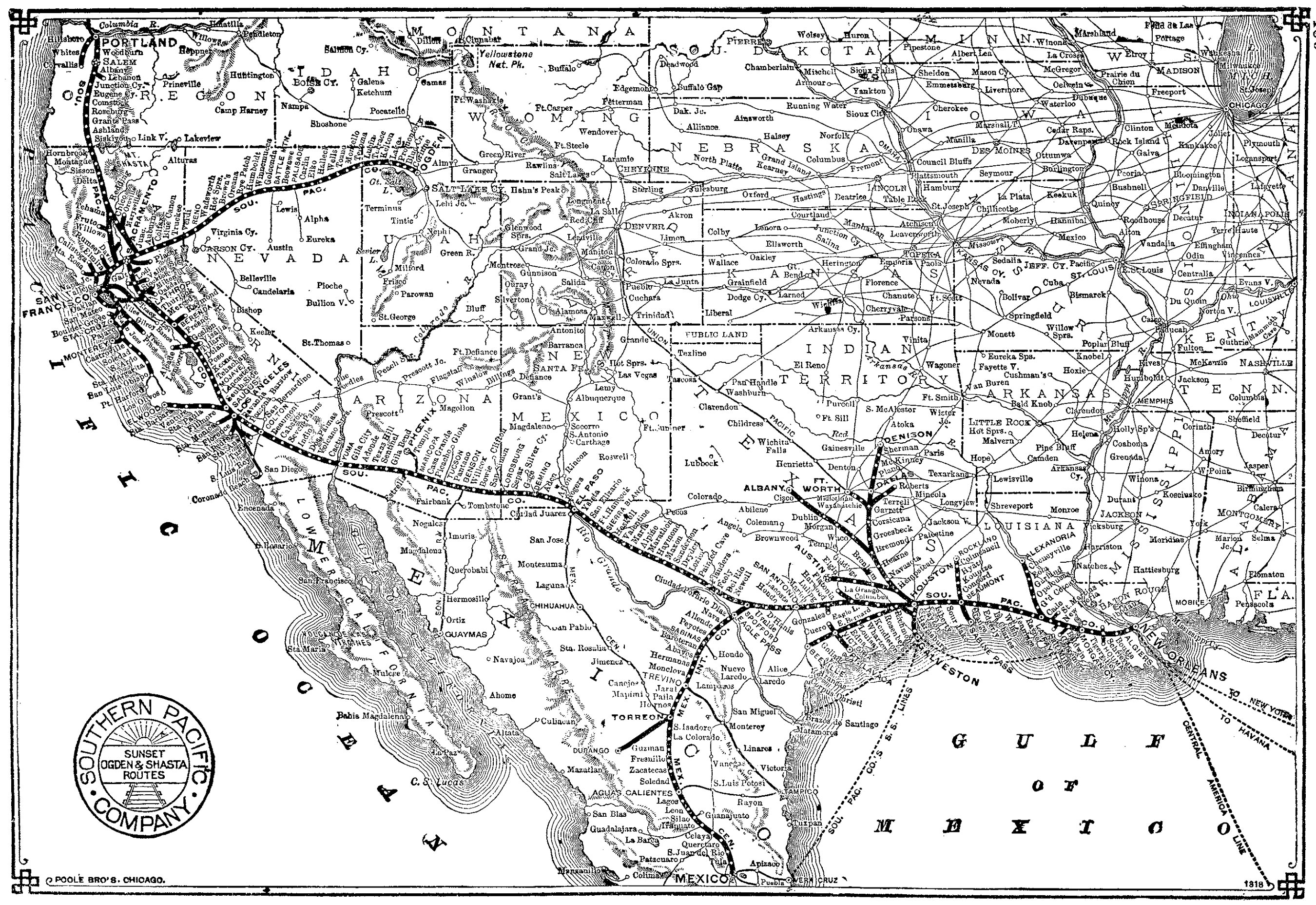- Home ›
- Tycoons ›
- Mark Hopkins
Mark Hopkins, Jr (Railroad): Executive, Biography, Net Worth
Last revised: March 4, 2024
By: Adam Burns
Mark Hopkins was an American entrepreneur and a key figure in the development of the Central Pacific Railroad. Born in 1813, he started his career as a grocer before moving to California during the Gold Rush.
There, he partnered with Collis Huntington, Charles Crocker, and Leland Stanford to form the Central Pacific Railroad Company in 1861. Perhaps the least known, and quietest, of the so-called "Big Four", Hopkins was nonetheless their cornerstone with his impeccable accounting skills and laid back, honest nature.
This, along with the fact that Hopkins was the oldest of the group, he was highly respected and no plan was executed before he had first reviewed it.
He became so highly respected he was also known as "Uncle Mark" and was always given final say on impending projects.
Hopkins also remained a close friend of the men, particularly Huntington - with whom he remained a business partner outside of railroading - until he passed away. Huntington always considered him the most honest man he ever knew.
Hopkins was instrumental in the railroad's growth and success. He passed away in 1878, leaving a significant portion of his wealth to educational and charitable causes.
Early Life
Mark Hopkins, born on September 1, 1813 in Henderson, New York, grew up amidst hardships and financial struggles, with education being one of the only means of escape. The son of Mark Hopkins and Anastasia Lukens Kellogg, he was the second of seven children in his family.
His family moved to St. Claire, Michigan when he was just 10 in 1824 and he only attended school until the age of 15 when he father passed away in 1828. He completed his primary and secondary education in local schools and later went to the University of Michigan.
Despite experiencing dire financial circumstances throughout his academic years, Hopkins proved to be a resilient and determined student. His personal life was no less challenging. Hopkins married his first wife, Mary Frances Sherwood in 1854. However, she passed away merely seven years later. In 1862, he married Mary Elizabeth Merritt, who survived him.
At A Glance
Mark Hopkins (father) Anastasia Lukens Kellogg (mother) |
|
Hopkins spent much of his younger years working in business, first as a merchant at the age of 16 and soon after starting his own company, Hopkins & Hughes, upon moving back to New York. After this venture he eventually became manager of the firm James Rowland & Company.
While modestly successful with these early careers, and also trying a brief but unsuccessful stint in law in 1837, Hopkins, like the rest of the "Big Four" group, decided to head west to San Francisco in 1849 with the ongoing California Gold Rush.
Mark Hopkins' fateful meeting with Collis Huntington, Charles Crocker, and Leland Stanford not only signified a remarkable turn in his career but also led to the inception of the Central Pacific Railroad. They collectively became known as the "Big Four."
Business Interests
He and 25 other men formed the firm New England Trading & Mining Company in late 1848 as a means to provide goods for miners in California. Hopkins traveled aboard the shipment of goods himself, which had to sail around Cape Horn of South America, arriving in San Francisco in August, 1849.
In 1850 he set up a grocery business with friend E. H. Miller, Jr that proved to be modestly successful. However, it was in 1855 that Hopkins started down the path towards railroading when he partnered with Collis P. Huntington to open an iron and hardware business.
Central Pacific
Hopkins’ involvement with the "Big Four" was largely financial, he was responsible for managing the financial aspects of their shared business ventures. His acute business acumen made him an invaluable member of this industrious quartet.
The Central Pacific Railroad was a monumental project that the "Big Four" undertook to aid the Westward expansion of America. Hopkins played a vital role in obtaining financial backing and government grants for the railroad.
Through persistent lobbying and negotiations, the "Big Four" managed to secure the charter for the Central Pacific Railroad of California in 1861. Hopkins' financial expertise contributed significantly to this.
Hopkins served as company Treasurer, a position he maintained throughout his life. His responsibility included the allocation and management of resources, which proved instrumental in the railroad's completion in 1869.
The Central Pacific was a colossal project, fraught with obstacles, labor shortages, topographical challenges, and financial limitations. Despite these hurdles, the Big Four, including Hopkins, pushed through to complete the ambitious project.
The railroad's completion on May 10, 1869 with the Golden Spike ceremony at Promontory Summit, Utah signaled a new era of connectivity and economic expansion in the United States, particularly in the West. Hopkins, as part of the Big Four, played a vital role in this transformative endeavor.
Hopkins' efforts in the completion of Central Pacific have been an essential contribution to American industrialization. It facilitated unparalleled trade and travel, spurring the economic growth of both California and the American West.
Other Interests
Apart from his role in the Central Pacific and attention to various mining and real estate interests, Hopkins also committed himself to public service. He was a member of the Committee of 30 that led San Francisco during the banking crisis of 1855.
Apart from his role in the Central Pacific Railroad and attention to various mining and real estate interests, Hopkins also committed himself to public service. He was a member of the Committee of 30 that led San Francisco during the banking crisis of 1855.
During the late 1860s and early 1870s, Hopkins financed and established numerous industries across the state, including wool mills, factories, and banks. His investments significantly bolstered the economy of California and solidified his financial stature.
Twilight Years
In his twilight years, Hopkins' wealth was estimated at $20-$40 million, making him one of America's richest individuals. Much of his wealth was invested in real estate, manufacturing plants, the Central Pacific Railroad, and his opulent mansion, which is now the Hopkins Hotel in San Francisco.
Today, Hopkins' legacy is intertwined with the Central Pacific and the transformative era it initiated. His financial acumen facilitated the construction of the railroad, which ultimately ushered in a period of unparalleled economic expansion in the West.
Legacy
Although Hopkins did not have any children of his own, his legacy continues through the Mark Hopkins Hotel in San Francisco, the opulent mansion constructed by his widow, which serves as an enduring symbol of his success and influence.
Much of Hopkins' life and work centers around the Central Pacific Railroad. His financial expertise, vision, and tireless contributions indelibly marked the railroad's history. Despite facing immense challenges in its conception and construction, the Central Pacific Railroad became a testament to Hopkins' relentless commitment.
Mark Hopkins' death in 1878 marked the end of an era, but his contributions to American industry and infrastructure continue to reverberate through the annals of American history. He is perpetually remembered as an indispensable member of the Big Four and a catalyst of American Westward expansion.
In conclusion, Mark Hopkins' life represents an extraordinary tale of resilience, vision, and enterprise. His role in the Central Pacific Railroad, his partnership with the Big Four, and his indomitable spirit paint a compelling portrait for all those fascinated with America's industrial history and the legacy of the railroad era.
Combining his business acumen with an unwavering commitment to progress, Hopkins helped lay the foundation for an industrial revolution that forever changed the American landscape. His life offers invaluable insights into how vision, tenacity, and cooperation can make lasting impacts.
His role as a financier in the Central Pacific Railroad project illustrates how critical financial management can be in undertaking large-scale projects. Through his involvement, Hopkins demonstrated the importance of careful investment, strategic planning, and financial foresight.
Hopkins' legacy continues to be an inspiration for entrepreneurs, historians, and students alike. His story serves as a testament to the transformative power of relentless determination, shrewd business sense, and visionary thinking.
Indeed, the life of Mark Hopkins serves as a robust case study for students studying business strategy, infrastructure development, and American industrial history. His life reveals the power and potential of strategic investment and collaboration in engineering societal and economic progress.
Moreover, Hopkins' life offers unique insights into 19th-century America, including the societal changes prompted by the Gold Rush, the challenges of enormous industrial projects such as the Central Pacific Railroad, and the dynamics of business partnerships.
His service in public roles, from his stint on the Committee of 30 to his influence on state-level economic projects, illuminates the intersection of finance, politics, and social responsibility, providing a nuanced understanding of the era.
Arguably, Hopkins' most significant contribution was his role in the completion of the Central Pacific Railroad. Despite numerous challenges, his financial expertise and unwavering commitment enabled the ambitious project to come to successful fruition.
This success not only resulted in a transformative shift in the transportation landscape of America but also created a ripple effect of economic growth across the West. The emergence of new industries, expedited trade, and more accessible travel can all be traced back to Hopkins' efforts.
Hopkins' life also provides valuable lessons in resilience and determination. Amid the turmoil of the Gold Rush era, fluctuating economies, and daunting challenges in building the railroad, Hopkins persevered, demonstrating the power of unwavering commitment and long-term vision.
His early life, precariously perched on the edge of financial hardship, and eventual rise to become one of the wealthiest men in America, provides an enduring illustration of the classic American Dream and the power of tenacity in overcoming life's adversities.
Through his life and contributions, especially as a part of the Big Four and the Central Pacific Railroad, Hopkins leaves behind a legacy of innovation, industry, and insightful business strategies, fueling constant intellectual pursuit and academic research.
In essence, Mark Hopkins' life story provides a rich historical narrative, filled with lessons about resilience, strategic business decisions, and the power of collaboration. As students delve into the complexity of his journey, they can draw on his experiences to enhance their understanding of America's history and its industrial growth.
In conclusion, Mark Hopkins' life journey, from his humble beginnings to becoming an irreplaceable part of the Big Four, highlights the transformative power of hard work, perseverance, and strategic decision-making.
As one who played a key role in the realization of the Central Pacific, he left an indelible mark on both the transportation sector and the wider socio-economic landscape of 19th-century America. His life offers an enduring testament to the impact one man can have on the world—a legacy that continues to inspire to this day.
Contents
SteamLocomotive.com
Wes Barris's SteamLocomotive.com is simply the best web resource on the study of steam locomotives.
It is difficult to truly articulate just how much material can be found at this website.
It is quite staggering and a must visit!


